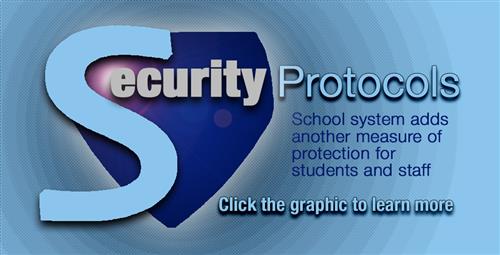- Fayette County Public Schools
- Homepage
School System Adds Another Measure of Protection for Students and Staff
Preemptive measures are being added to the Fayette County Public School System’s safety protocol in light of school shootings that have happened across the nation.
Long rifles will be placed in all schools where there is a School Resource Officer (SRO). The Fayette County Board of Education approved the measure at its June 25 regular meeting following a recommendation that was made to the board on June 11 by the school system’s safety team and endorsed by Fayette County Sheriff Barry Babb, Fayetteville Police Chief Scott Gray, Peachtree City Police Chief Janet Moon, and Fayette County District Attorney Ben Coker. The recommendation came following multiple meetings between the school system’s safety team and the county’s law enforcement leaders.
The long rifles will be secured in a safe that will be placed in the SRO’s office and protected by an alarm system and cameras monitoring the office. Only law enforcement agencies will be able to access the safe that will also house tactical gear including a helmet, armored vest and laser sights. The long rifles will be stored in the safe during days school is in session and secured in the SRO’s law enforcement vehicle during the summer and holiday breaks.
SROs with long rifles on campus is not new, they currently have them but the weapons are stored in their law enforcement vehicles. One of the reasons for the recommendation to store them inside the school is to decrease the reaction time to retrieve the weapon if an extreme situation warranted its use, such as the school shootings that happened at Marjory Stoneman Douglas High School in Parkland, Florida and Sandy Hook Elementary in Newtown, Connecticut where the shooter used assault weapons.
Also, in situations where intruders are armed with assault weapons, law enforcement officials cite the need to be able to return fire at long range. Many school hallways extend longer than 25 yards, a pistol is only accurate up to 20 yards. Without the right tools to combat a heavily armed intruder, SROs would be at a disadvantage.
The only cost to the school system will be the installation of the safe, security system and camera at a cost of $2,000 per school. Local law enforcement agencies will purchase the rifles, ammunition, helmets, body armor and any other equipment needed. SROs must be trained and certified before they can be issued a long rifle. The law enforcement agencies will also cover training and certification costs.
This is just the latest measure that has been added to a host of other safety protocols the school system has in place to help keep students and staff safe.
Access control at all schools prevent visitors from entering the school until they can be verified by the front office staff. All schools are monitored by security cameras and there are plans to add an additional 150 cameras in critical areas during the 2018-2019 school year.
Schools also have “active threat lockdown buttons” that, when activated, send a special lockdown warning tone through the schools’ intercom systems and is linked to the county’s 911 center. A Room Verification Status Program (RSVP) gives law enforcement officials access to maps of the interior of each school and allows them to verify rooms that have been cleared as safe and those where there could be a threat. This system is also linked to the 911 center.
The school system has emergency plans for any type of emergency including those related to weather and fire, environmental hazards and intruders. Schools conduct safety drills with students and staff each year so they can practice what to do in the event of an emergency.
School Resource Officers from the Fayette County Sheriff’s Department, Fayetteville Police Department and Peachtree City Police Department are on staff during the school day at all middle and high schools.
The school system also has regular meetings with the county’s sheriff, city police chiefs and emergency management personnel to discuss needs, concerns and areas of focus to ensure that as much as possible is being done to protect the safety of students and staff.


